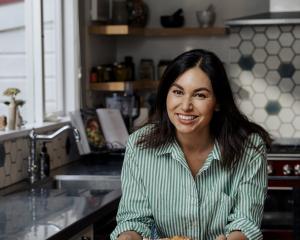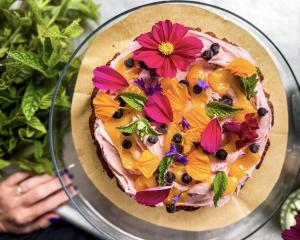Marije Vogelzang shook up the design world with her approach to food. In Dunedin for the International Food Design Conference and Studio she tells Rebecca Fox the time is ripe for change.
No-one can argue the world's food system is not sick, Marije Vogelzang says.
• Using what she has story here
The Dutch "eating designer'' is on a mission to get designers to take a leading role in helping to make the system better.
There is a "depressive list'' of "big problems'' in the food system, from obesity and empty oceans to antibiotic-resistant animals and food waste, she says.
"Creative people are needed to penetrate the food system. I'm not saying they'll change the world.''
Vogelzang believes designers can move between the specialist arms of the food world linking players together and bringing an overarching view to the problems.
"For many people, bringing together the concept of design and food is an alien one.''
It certainly was when Vogelzang decided to use food as her product design of choice instead of the more traditional ceramics, textiles or wood, which she was "lousy'' at designing with at design school, she claims.
The idea came to her while at home one night cooking a meal and developed into her final-year project: a white funeral dinner that plays on the Dutch not using food in their mourning rituals as some cultures do.
The white-coloured foods have a subtle but sharp and bitter taste, which symbolically fits the setting, she says.
On further reflection, Vogelzang came to see food as the most important material in the world, something that impacts every aspect of life, more than just calories or a way to sate hunger.
"It influences all of us. It's what we live off, what we need daily, our food economy is the biggest economy of all. It is how we communicate or identify ourselves and connect to each other.''
Food has links to people's psychology, to their health and biology, to the types of agriculture used and how landscapes are shaped, she says.
"What we eat determines what your landscape looks like. Look at New Zealand, having cattle grazing gives you a different landscape.''
Food impacts on the environment and is a major player in climate change.
Vogelzang opened two restaurants called Proef, one in Rotterdam and another in Amsterdam, the aim of which was to combine a design studio with a restaurant, allowing her to experiment on her diners.
"They were my guinea pigs. Proef means taste and test.''
She ran them for seven years, learning a lot, but says though she still works with restaurants she never wants to return to that daily grind.
Instead she has found her niche as the head of food and design at her old design college.
As her work developed she saw there was a gap for another aspect of design to be included in the curriculum and the opportunity to lead the new department and pass on her knowledge to young designers was not to be missed.
"Food and design is like walking into a empty field.''
While more and more people were seeing the light on a global scale it was still only a "handful'', she said.
In another year's time, her first students will graduate having spent their design studies looking at all aspects of food and design from history, to soil, to politics.
Vogelzang has also recently started the Dutch Institute of Food Design, a global platform to bring all parts of the discipline together.
It comes back to trying to work out what can be done with a complex food system that
is making people and the earth unwell, she says.
"We seem to consume without tasting things. And there is not only the waste from food but the waste related to food production.''
The food choices people make will influence what the world looks like today and tomorrow, Vogelzang says.
Designers by their nature are curious and questioning and can look at food problems from an imaginative point of view, she says.
Author of Eat Love, Vogelzang has also worked with global companies such as Nestle, Lego, Selfridges and Nandos to design food concepts.
"I'm much more interested in working with companies that don't have the same morals as you have, intensive farmers and big food companies. That is the most exciting as you bring something positive and maybe change a tiny thing which can have a big effect.''
Vogelzang's work has made her grateful for the food she and her three children have access to.
"Supermarkets are so full of food, every day we take that for granted.''
Added to that large producers are pushing people to eat more food of a lesser quality.
As a working mother, she finds she is inspired by her children, even creating work around her daughter's difficulty eating vegetables.
It inspired her to think differently about food and she subsequently created a project in Hungary, involving gypsies feeding diners and telling their stories, but in a way that meant neither could see each other.
"It was a strong project which caused quite a stir in Hungary. Feeding is such a primal, mothering thing.''
Vogelzang is enjoying her first trip to New Zealand and happily surprised by how her work resonated with people around the world.
"It's super-simple what I do on a human level, everyone can understand: sharing food and eating.''











